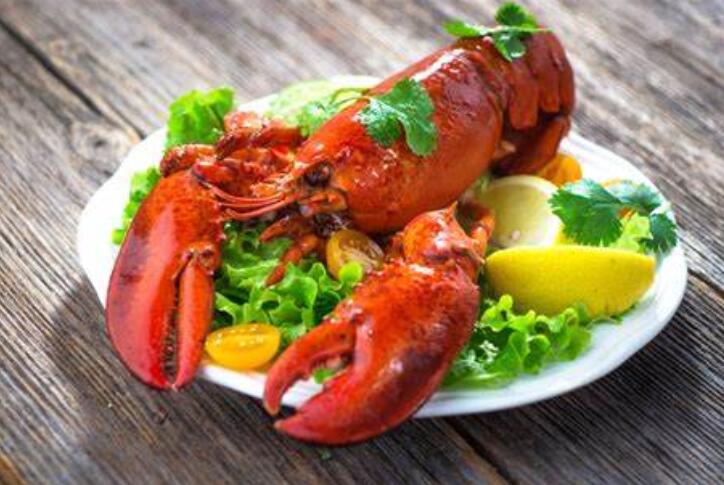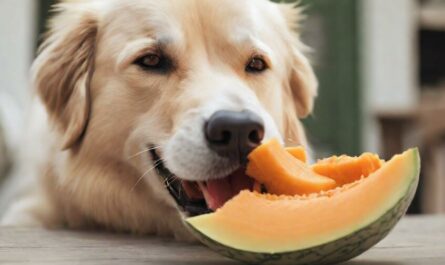As dog owners, we only want the best for our furry companions. Naturally, when we sit down to a mouth-watering lobster dinner, it’s hard not to wonder if our dogs can partake as well. Can man’s best friend eat lobster too or should it be avoided? Are certain parts or preparations safer? What are the potential benefits and risks? This detailed guide will cover everything you need to know about feeding lobster to dogs.
Can Dogs Eat Lobster Meat?
The good news is yes, dogs can eat cooked lobster meat in moderation. Many dogs enjoy a taste of the sweet, succulent meat from time to time.
However, there are some very important safety precautions to take regarding preparation and portion sizes.
Should You Feed Your Dog Raw Lobster?
Feeding raw lobster to dogs is strongly advised against.
Like many raw seafoods, raw lobster may be contaminated with bacteria that can cause food poisoning in dogs. These include:
- Salmonella – A common bacteria that can lead to vomiting, diarrhea, dehydration, and fever in dogs.
- Listeria – Causes fever, muscle tremors, and neurological issues. Can be fatal without treatment.
- E. coli – Leads to severe vomiting and bloody diarrhea. Can also cause kidney failure.
In addition to harmful bacteria, raw lobster may also contain parasites like Thorny Headed Worms that live in the muscles. These parasites can make dogs extremely sick if ingested.
Cooking lobster thoroughly destroys any dangerous bacteria or parasites present and makes it safe for dogs to eat.
Only feed your dog lobster meat that has been properly cooked. Never feed raw, undercooked, or unprepared lobster.
Are Lobster Shells Safe for Dogs?
While the meat is fine for dogs to eat, you should never feed dogs the hard outer shell or exoskeleton of lobsters.
Lobster shells are thick and brittle. If chewed, they are likely to shatter into extremely sharp, pointy pieces that can do major damage.
Consuming the indigestible shell fragments poses some serious risks including:
- Choking Hazards – The sharp shell pieces can get lodged in the mouth, throat, or airway, potentially blocking breathing and becoming fatal if not dislodged. Always monitor your dog when feeding any new food and know canine CPR just in case.
- Mouth and Throat Injuries – The shell can lacerate the sensitive mucous membranes of the mouth and esophagus while chewing or swallowing.
- Stomach and Intestinal Damage – Shell fragments that make it to the stomach have sharp, jagged edges that can cause significant injury and bleeding.
- Intestinal Blockages or Perforation – Indigestible shells or large pieces can obstruct the intestines or completely puncture through the gastrointestinal tract. This requires immediate emergency surgery.
Feeding a dog an entire lobster cooked in the shell is an absolute no-no and extremely reckless. Always shell your lobster fully before preparing it for your dog.

What Are the Potential Benefits of Feeding Dogs Lobster?
Feeding your dog a small amount of cooked lobster meat on occasion likely won’t provide huge nutritional benefits. However, in moderation it can contribute beneficial nutrients including:
High-Quality Protein
Lobster is an excellent source of complete, lean protein. Dogs need adequate protein in their diets for growth, maintenance, and repair of muscles and tissues.
The high protein content combined with low fat makes lobster a nice treat option even for senior dogs or dogs trying to lose weight. It provides protein without excess calories from fat.
Omega-3 Fatty Acids
Lobster contains healthy polyunsaturated fats called omega-3s. Omega-3 fatty acids benefit dogs in several ways:
- Supports brain development and function
- Reduces inflammation
- Improves skin and coat
- Promotes joint health
- Supports cardiovascular health
The omega-3s in oily fish like salmon tend to get more attention. But lobster contains a decent amount as well.
Vitamins and Minerals
In addition to protein and healthy fats, lobster provides a variety of important vitamins and minerals for dogs including:
- Vitamin B12
- Selenium
- Zinc
- Copper
These support immune function, thyroid hormone production, bone health, blood cell formation, enzyme function, and more.
However, it’s important to keep in mind that the small amount of lobster most dogs will eat only provides trace amounts of these nutrients. Complete commercial dog foods carefully formulate all the vitamins and minerals dogs need in the proper ratios.
Think of any nutritional benefit your dog gets from eating lobster as just a small added bonus, not a sole source of any particular nutrient.
Is Lobster Bad for Dogs?
Lobster itself is not inherently harmful or toxic to dogs in small amounts. However, there are some important factors to be aware of:
Sodium Content
Lobster contains quite a high amount of natural sodium. While healthy dogs can handle sodium in moderation, too much can be problematic particularly for dogs with certain medical conditions.
Dogs prone to heart disease, congestive heart failure, or kidney disorders may need to limit sodium intake. Too much salt can worsen associated symptoms.
Cholesterol Levels
The cholesterol naturally found in lobster and other shellfish may also cause issues for some dogs.
Dogs with hypothyroidism, diabetes, Cushing’s disease, or pancreatitis can experience flair ups when fed high cholesterol foods so lobster is best avoided.
Heavy Metal Exposure
One concern with feeding dogs seafood products frequently is potential heavy metal exposure. Fish and shellfish may contain small amounts of:
- Mercury
- Lead
- Cadmium
- Arsenic
Research shows regular lobster consumption in humans leads to higher accumulation of heavy metals in hair samples. While minute doses are not a huge cause for alarm, these can build up over time with excessive intake.
Allergic Reactions
Some dogs may be allergic to shellfish like lobster. This is far less common than allergies to more routine proteins like beef or chicken, but still possible.
Diarrhea, vomiting, itchy hives, facial swelling, and difficulty breathing can all indicate an allergy. If your dog has an allergy to any type of shellfish, you should avoid feeding them lobster.
What Kind of Lobster Is Safe for Dogs?
When selecting lobster to feed your pup, it is important to ensure you select the right type of lobster.
The most common types of lobster are the American lobster, the European lobster, and the rock lobster. All three types of lobster are safe for dogs, but it is important to ensure it is cooked properly before serving it to your pup.
Types of Lobster Safe for Dogs to Eat
When feeding lobster to dogs, it is important to consider the specific parts of the lobster that are safe for consumption.
1. Can Dogs Eat Lobster Roe?
Lobster roe, the eggs of the lobster, should be avoided when feeding your dog. While it’s not necessarily toxic, it’s best to err on the side of caution. Lobster roe can be rich and high in fat, which may lead to digestive upset if consumed in significant quantities.
2. Can Dogs Eat Lobster Guts?
It’s best to steer clear of feeding your dog lobster guts or the internal organs of the lobster. These parts can be rich and fatty, potentially causing digestive issues or an upset stomach for your furry friend.
3. Can Dogs Eat Lobster Brains?
Feeding lobster brains to your dog is not recommended. Lobster brains can contain concentrated levels of certain nutrients and compounds that may not be suitable for your pet’s digestion. To ensure your dog’s safety, stick to plain lobster meat without any organ parts.
4. Can Dogs Eat Lobster Shells?
No, dogs should not eat lobster shells. Lobster shells can be sharp and splinter, posing a significant choking hazard or causing injuries to your dog’s digestive tract. Always remove the shell completely before sharing lobster with your pet.
5. Can Dogs Eat Lobster Legs?
While lobster legs may seem tempting for your dog, it’s best to avoid them. Lobster legs can also pose a choking hazard and may not provide significant nutritional value. Stick to the meaty parts of the lobster to ensure your dog’s safety.
6. Can Dogs Eat Lobster Bisque?
Lobster bisque is typically a creamy soup made with lobster meat and various seasonings. It’s not a suitable option for dogs, as the seasonings and spices can harm their digestive system. It’s best to avoid sharing lobster bisque with your furry friend.
7. Can Dogs Eat Imitation Lobster?
Imitation lobster, often made from fish or other seafood, can be safer for dogs if served plain and in moderation. However, always check the ingredients for any additives or seasonings that may not suit your pet.
8. Can Dogs Eat Lobster Tails?
Yes, dogs can eat lobster tails, but with caution. Ensure that the lobster tails are thoroughly cooked, plain, and free of seasoning. Remove the shell and any bones before offering a small portion to your dog. Remember that moderation is key when sharing lobster or any seafood with your furry friend.
How Should You Prepare Lobster for Dogs?
The safest way to prepare lobster for dogs is to cook it simply using methods like:
- Steaming
- Boiling
- Baking
Make sure the lobster meat is cooked fully through until opaque and flaky. Avoid any seasonings, spices, onions, garlic, or added salt. Do not cook it in butter or oil.
This helps prevent gastrointestinal issues that can occur from eating rich, heavily seasoned foods. Plain boiled, steamed, or baked lobster is safest for your dog.
Let the lobster cool fully before feeding it to avoid burns. Cut it into bite-sized pieces an appropriate size for your dog as well. And of course, remove every last bit of the shell before giving it to your pup!
How Much Lobster Can Dogs Eat Safely?
Due to some potential risks, most veterinarians recommend limiting lobster to only occasional small treat portions rather than regular meals. Too much can cause gastrointestinal upset.
As a general guideline, it’s recommended to limit lobster meat to 10% or less of your dog’s total daily food intake.
For example:
- For a small dog eating 1/2 cup of food per day, a safe portion would be about 1-2 teaspoons of lobster.
- For a medium dog eating 1 cup of food per day, limit to 1-2 tablespoons of lobster.
- For a large dog eating 2 cups of food per day, 2-4 tablespoons is an appropriate lobster portion size.
To prevent gastric distress, serve lobster meat at separate mealtimes from your dog’s regular food rather than mixing together.
Of course, the exact amount suitable for your individual dog depends on your pup’s size, age, and overall health status. When in doubt, consult with your veterinarian.
How to Tell If Your Dog Is Allergic To Lobster?
Some dogs may be allergic to lobster, so it is important to watch for signs of an allergic reaction after feeding your pup this seafood dish. Symptoms of an allergic reaction can include itching, redness, hives, and swelling. If your pup is showing signs of an allergic reaction, it is important to contact your veterinarian for advice.
The Verdict: Can Dogs Eat Lobster?
After reviewing all the risks and benefits, the verdict is that yes, dogs can eat lobster in small amounts as an occasional treat.
The key is to only feed dogs properly cooked lobster meat. Never feed raw, undercooked, or whole lobster in the shell. All shell must be removed to avoid injury. Seasonings and butter should also be avoided.
In moderation, the meat can provide dogs a tasty morsel to enjoy and small amounts of protein, healthy fats, vitamins and minerals. However, exercise caution with dogs prone to allergies, pancreatitis, or other health conditions.
Lobster should never make up a significant portion of any dog’s diet. Feeding too much too often increases the risks of health issues. Follow recommended guidelines for infrequent, smaller portions based on your dog’s size.





